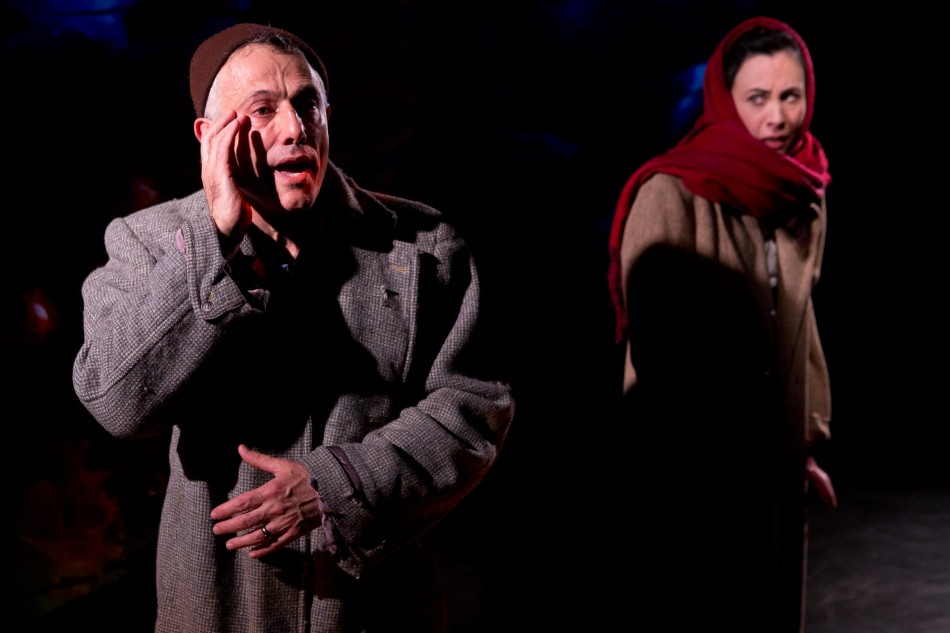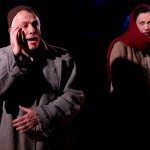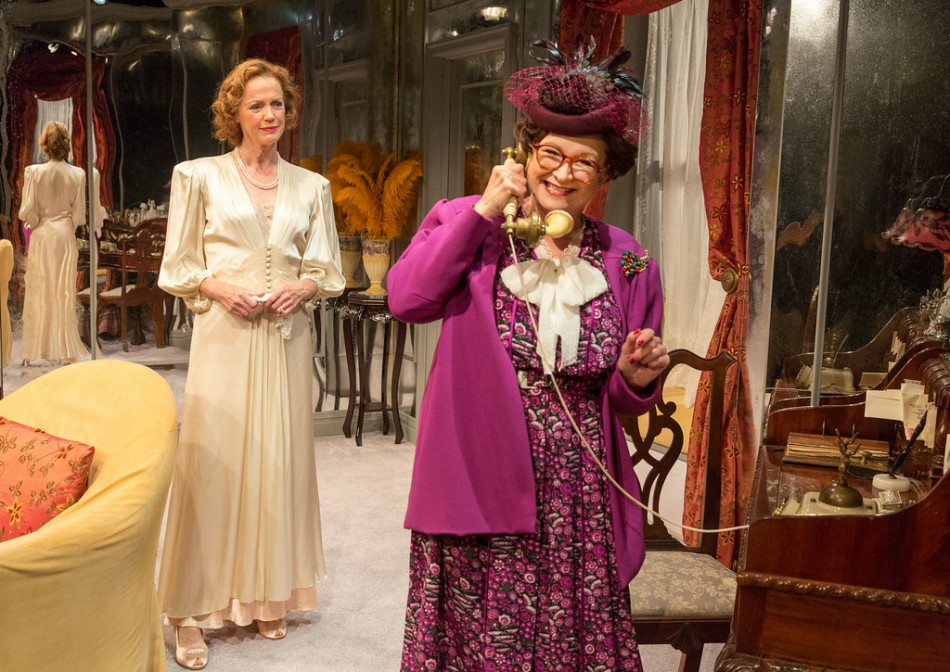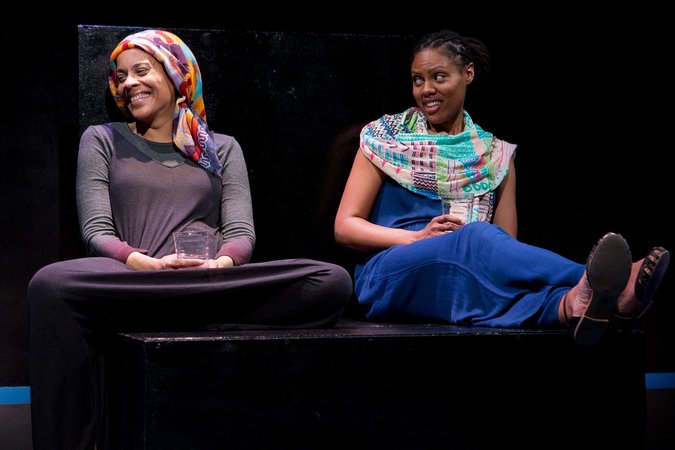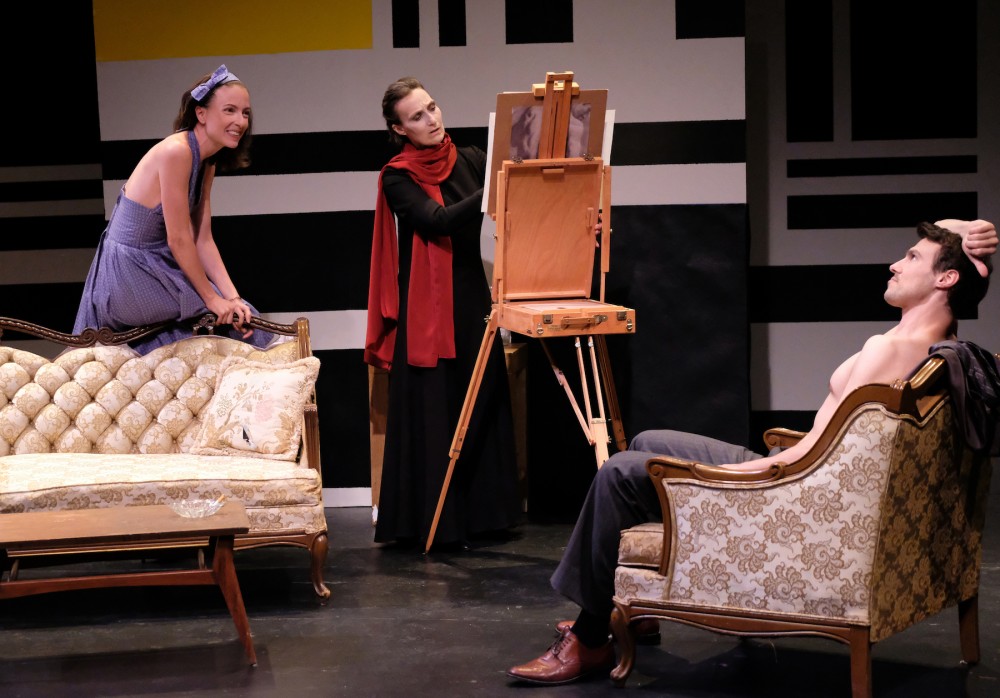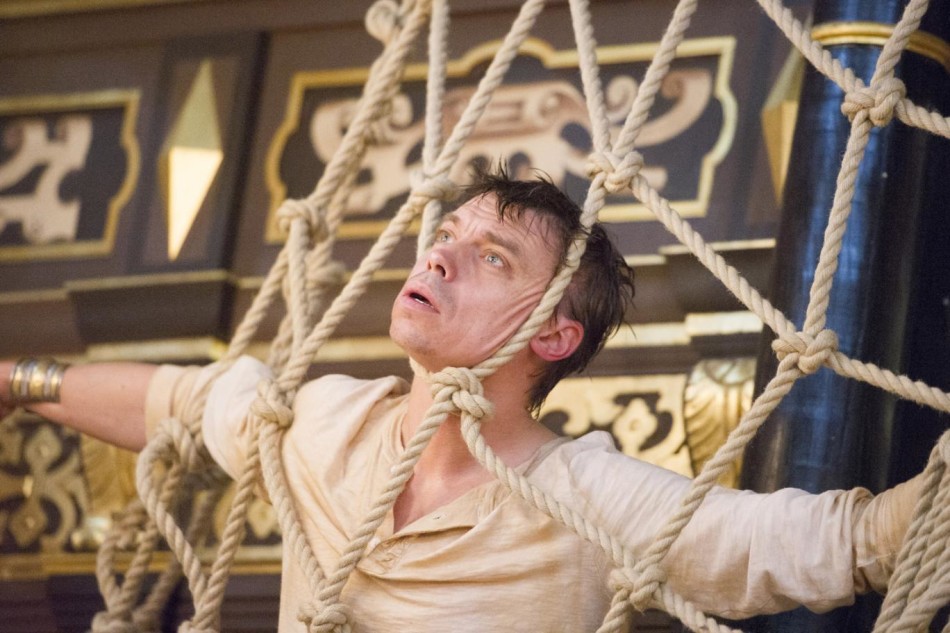On The Other Side of the River
Review By Myra Chanin
I first encountered the works of Peretz Hirshbein as a reluctant teenager, forced by my ethnically-oriented Yiddishe Mama to attend the Workmen’s Circle Yiddish High School every Saturday morning. Needless to say, I was not in their advanced placement courses. I knew Hirshbein as the scriptwriter of the Yiddish film Grine Felder (Green Fields), the tale of a Talmudic scholar who forsakes the city to become a tutor for a rural family and finds romance. Filmed in 1937 in New Jersey, Grine Felder is now considered to have heralded in the Golden Age of Yiddish Cinema in the US.
I never expected to hear Hirshbein’s name again, but to my surprise, last March The Target Margin Theater revived and performed Hirshbein’s The Haunted Inn – in Yiddish, no less! – at an arts center on the Lower East Side. Their efforts to make The Inn into a 21st century au currant EconoLodge was too hip for me and made me flee from the theater during intermission.
But hope blooms eternal in old Jewish hearts, and a mere year later, I was curious to see how Hirshbein’s On The Other Side of the River, translated into English, would fare under the direction of Shannon Sindelar at the New Worlds Theater Project.
Nu, what can I tell you? This production is gorgeous – a total triumph of almost surreally exquisite taste and style over limited funding. It’s miraculous to have done so much with so little. Patrick Rizzotti’s sets are sexy. The cabin walls of filmy bluish-gray translucent fabric, crinkled to resemble wooden logs, feel ghostlike and outerworldly thanks Nick Solyom’s eerie off and on lighting effects. The constant whistling of the wind is unnerving and Eric T. Lawson’s original music gets your attention. .
The action begins in a shtetl cabin near an on-the-verge of flooding river where the orphaned, teenage Mir’l lives with Menashe, her blind grandfather. Menashe feels that God cannot do anything worse to him than He has already done – first taking away his eyesight, then killing his only daughter right after Mir’l’s birth and finally drowning his son-in-law in a flood. Menashe retains his faith in the protection given to Mirl by her mother’s amulet which Mir’l wishes to open or cast aside. After their home is flooded, Mir’l and Menashe find themselves on a hillside. Menashe freezes to death there and Mir’l encounters a seductive stranger who forces her to embrace him so they can keep each other alive. After the stranger disappears, Mir’l, who now lives with her grandmother, wants to join him on the other side of the river even though going to him would result in her death.
More a mood piece than a plot-driven work, the stunning performances of the actors were pure Stanislavski.
Particularly compelling was David Greenspan’s blind Zeyda. He reminded me of Joseph Wiseman whose Dr. No is eternally spooky and menacing. David Akena’s Stranger was an irresistible, semi-diabolical seducer who exuded warmth. Jane Cortney’s semi-hysterical Mir’l was a study in adolescent sexual denial.
Only 60 minutes long, On The Other Side of the River is not everyone’s cup of tea. It’s not for a biff, bam, boom action freak, but it would be fascinating for anyone interested is seeing art created by the judicial application of the best things in life that are almost free.
“On the Other Side of the River,” HERE, 145 Sixth Ave. (entrance on Dominick Street). Performances are Thursday – Saturday at 7 p.m., Monday at 7 p.m., and Sunday at 2 p.m. For tickets, $18, call OvationTix at (212) 352-3101 or visit ovationtix.com.


